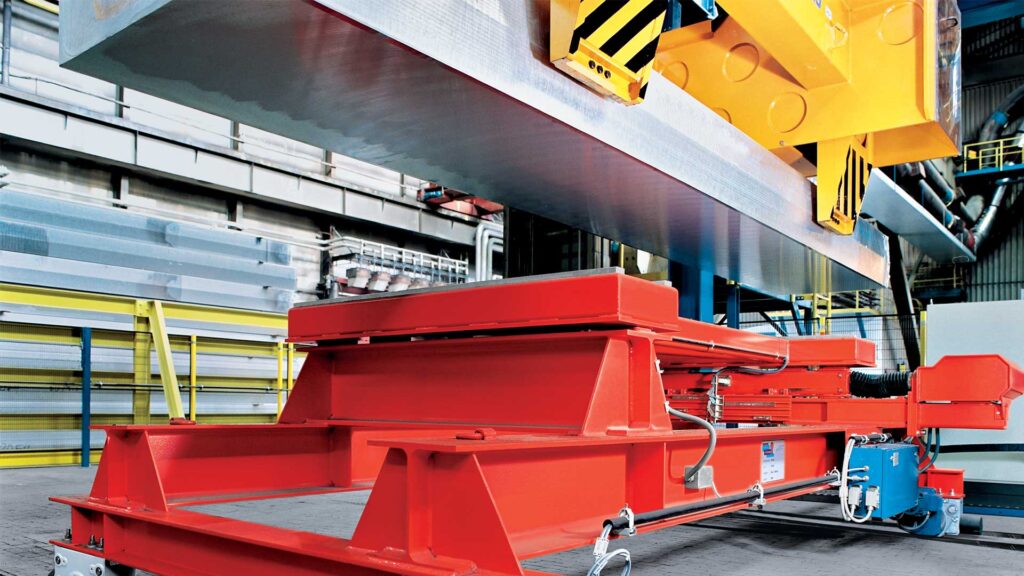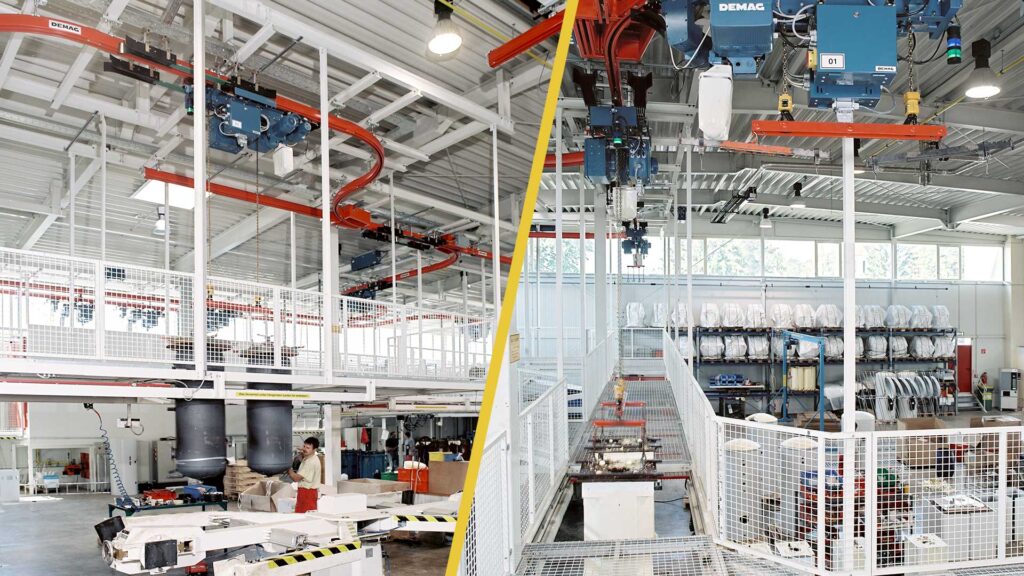Robots and AGV’s are common thoughts when factory automation is brought up. Though impressive, this type of technology isn’t the only way to implement automation in manufacturing operations. Depending on your requirements and the support needed, there are other types of automation that can meet your needs. Continue reading to discover other ways automation can be used for material handling, lifting, and transporting loads in your facility.
Factory Automation Overview
Automation can be defined as a system that handles, moves, transports or stores components used during manufacturing and distribution. Some automation systems include AGVs (automatic guided vehicles) or robots while others automate a lifting process or monorail line to deliver goods.
Factory automation uses intelligent devices to operate machinery and equipment with minimal operator interface. When added to manufacturing facilities, automation can add many benefits to your operations. This type of technology can improve efficiency, quality, and lower costs while improving safety by limiting human intervention. Many times, automation can increase output of your operations. Automation can look very different from factory to factory, depending on your operational processes and requirements.
Encompassing different systems and technologies to handle and move materials and products within a factory or warehouse, automation can complete repetitive, awkward tasks. This allows your workforce to focus on more value-added activities. In material handling, there are different ways you can automate vertical and linear processes.
Automating Linear Material Handling

Linear motion happens constantly in manufacturing. It could be the transport of raw materials from station to station across the factory. It can encompass precise positioning for indexing or storage of raw materials and WIP. Linear motion can be performed in a variety of ways whether with a transfer car, conveyor, or AGV. Regardless of the application, these applications can require the motion precise starting and stopping points.

Motion control requiring precise positioning needs the right gear motor. Similar to the transmission in your car, the gearbox torque achieves the speed for accurate stopping points and positioning you require. For linear motion with a device like a transfer car, pairing the gear motor with a right wheel to fit your capacity and environmental requirements is critical.
Using a wheel block system allows you to attach a complete wheel block assembly (wheel, bearings, and housing) to the structure for transport. Finally, choosing all motion components from one manufacturer makes purchasing and after sales simpler.
Automating Lifting Processes
Hoists used in automated lifting processes should be smart lifting devices with intelligent features or lifting devices where smart components can be added. Intelligent features include variable speed lifting, encoders, programmable logic controllers (PLCs), and safety systems. These intelligent solutions are required when automating overhead lifting.
Factory automation for lifting processes can eliminate operator fatigue from repetitive movements, ensure accuracy of pick and place tasks, remove operators from toxic areas, and optimize cycle time for sensitive pick and place operations.

For automating any sized load, a smart hoist is needed. Many times, wire rope hoists received directly from a manufacturer will be smart out of the box. These hoists may use inverter control and software, meaning it can be programmed via an app or programming to meet automation needs. Limit switches and other safety systems can be added, programmed to your requirements. Some hoists will still require additional hardware to meet automation needs.
Electric chain hoists use the same inverter technology for lifting loads but generally require additional components to meet automation needs. Additional drives, connecting components, PLCs and controls will tailor the hoist and its motion to your requirements. Automation involving chain hoists may be used on an enclosed rail crane, monorail system or even in a stationery application to lift heavy doors.
Factory automation can look very different based on your requirements. It’s more than just robots and AGVs. Automation can allow your workforce to stay safer and your production facility to become more efficient. Linear movements can be achieved with devices like transfer cars that use gear motors and wheels to transport a load with precision. Vertical movements are achieved with overhead cranes and hoists. These intelligent devices can be programmed to meet process requirements.
Are you interested in learning more on how Demag products can assist for your Automation needs? Reach out to our experts for a consultation.
